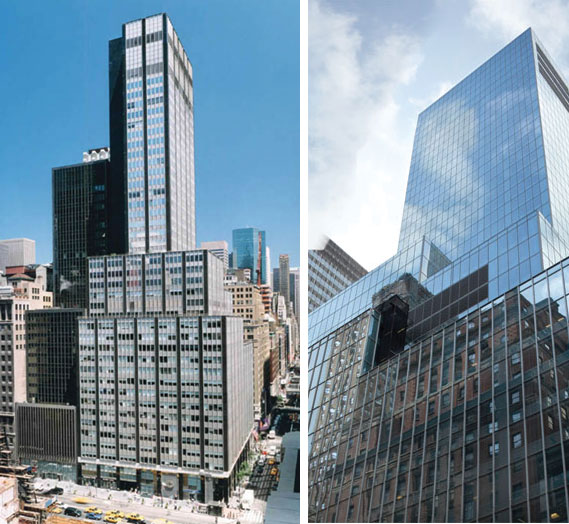About Face: Giving Existing Towers a Modern Edge With Recladding
Renovation Design Process
Renovation and replacement of façades on existing high-rise commercial buildings is different from the process used for new buildings. Professionals involved in this work have documented the process based on their own and their company's experience.1 They point out that replacing a building façade requires a good bit of proper planning and analysis. In new construction, the process is not encumbered by existing conditions or occupancies. By contrast, the renovation of any occupied, existing building needs to fully take into account the existing conditions, including the people who may or may not occupy the building during the renovation. Having a full understanding of those existing conditions is often critical to the success of any renovation project.
Consideration and execution of a recladding project on an existing building can be broken down into the following three phases:
1. Feasibility phase The first step is a feasibility study or assessment to determine the pros, cons, benefits, and challenges to a retrofit. It begins by articulating a preliminary set of goals and objectives as developed by the owner in concert with the design and construction team. This is followed by a basic building survey to collect the relevant information about the building structure, the existing façade, the current and intended use and layout of the building, and other relevant design factors. Concurrently, the owner will likely engage in some financial analysis and planning to determine budget parameters while preliminary construction estimates are developed. Also at this point, it is important to address and take into account the disruption to building operations and how to plan the work in light of occupants remaining in place or moving to an alternate location. The question comes down to who will be impacted the most—the occupants as work is being done, or the contractor as they adjust schedules and workflow to accommodate occupant needs. Either way, the decision needs to be made so occupants can relocate either to other spaces in the same or another building or remain where they are with some degree of temporary barrier between occupied space and the renovation work. All of this will have an impact on the proper sequencing and workflow of the renovation, and of course will affect the overall cost of the project as well. Relocating occupants to another location will likely allow the work to progress more quickly, but will create added cost for moving (out and back in) plus any difference in rental costs. Remaining in place may appear to be more cost effective, but could reduce work productivity for both contractors and occupants. The result of this feasibility phase is a collected body of information that allows the owner, designers, constructors, financers, and other stakeholders to make fully informed decisions on the best means to move ahead.
2. Design phase Information from the feasibility phase directly informs and helps direct the design phase of the façade replacement. As the design is developed, the specific details of the new curtain wall system can be moved into design options that can be tested against the parameters of the feasibility phase. That testing will likely include some ongoing review of design variables as they affect both cost and energy efficiencies of the project. From a cost standpoint, this is the time to engage in value engineering as appropriate to help ensure a positive outcome rather than wait until the design is too far developed. It is also the time to engage with façade specialists, engineers, fabricators, and contractors in the spirit of integrated design to determine specific cost drivers, design options, and other key factors. From an energy standpoint, the use of computer simulations to show the impacts of different curtain wall options on the energy performance of the building should also be done earlier rather than later in the design phase to help select the most effective solution. Once the choices are narrowed, a final structural analysis will be necessary to be sure that the change in loading conditions due to the new façade can be either borne by the existing building structure or accommodated through structural enhancements. Finally, code compliance needs to be demonstrated and a review of the relevant details related to fire safety, loading, etc. needs to be factored in.
3. Implementation phase With the design of the replacement façade fully developed, the project moves to the implementation phase which begins with securing the appropriate building permits and lining up the full cohort of construction participants. The procurement or ordering of the curtain wall system and any related components needs to be undertaken so that fabrication and assembly can then get scheduled and underway. Overall, the construction work needs to be scheduled to allow for portions of the selective demolition of the existing façade to be coordinated with shipping and delivery of the same portions of the new façade. That means that installation may occur in one building area at a time or across multiple sections of a building as determined to be most appropriate to the specific project. As work progresses, the removal and recycling of any construction and demolition debris needs to be carried out so the site remains clean and safe. Perhaps one of the most important things during this entire implementation process is quality control. Therefore, it is recommended that a façade commissioning agent be retained to assure that the end result performs correctly as designed and meets everyone's satisfaction.










